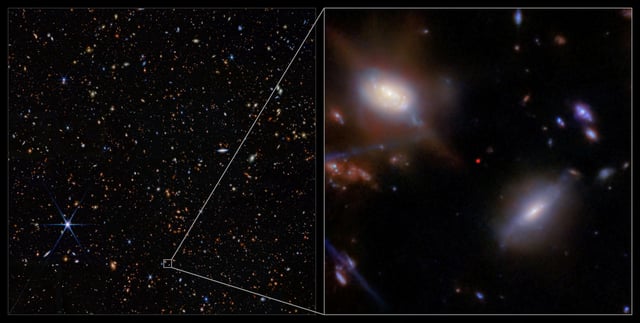Overview
- The James Webb Space Telescope identified JADES-GS-z13-1, a galaxy observed as it was 330 million years after the Big Bang, making it one of the most distant galaxies ever discovered.
- The galaxy exhibits strong Lyman-α emissions, a signal linked to hydrogen reionization, which was previously thought to occur much later in the universe's history.
- Researchers are investigating whether the ionizing radiation originates from massive, hot stars or a supermassive black hole at the galaxy's center.
- The findings challenge existing theories of early galaxy formation and the timeline of cosmic reionization, reshaping our understanding of the universe's first billion years.
- The Webb Telescope's advanced infrared capabilities were instrumental in detecting and analyzing the galaxy, with further studies planned to uncover more about its characteristics and the onset of reionization.

